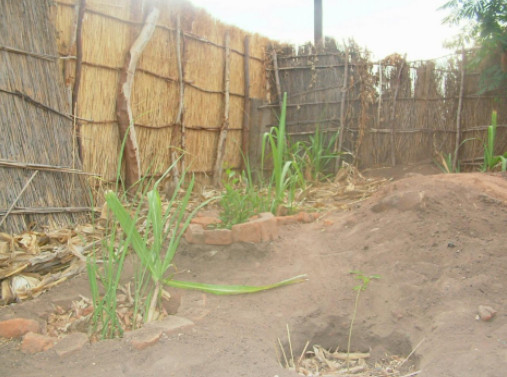
- This event has passed.
Self-practice for nature conservation: Malawi
August 28, 2022

Trying at home, Living the talk
Self-practice is one approach I am using to contribute to nature conservation and upgrade my home environment. The idea comes in after noticing that my new home has a number of problems and urgent solutions are necessary. Having learnt a lot from a number of nature conservation workshops, I was able to apply the following interventions.
- Happy Mwabe, Youth Volunteer, Malawi
Problems
1. Problem One:
- The house has no drainage structure to protect the foundation of the house from rain drops and runoff
- The rain drops from the roof and the ground run-off gradually erode away and expose the foundation of the house.
Solution
Planting green hedges along the house edges.
Desired Deliverables
- The hedge rows would caution the rain drops impact from the roof during the rains.
- The shrubs will also control run off along the house.
- And on top of that, the live structure, when grown, will provide a splendid botanical view in the home environment.
Principles applied in mounting the hedge rows
- Hedges are planted in sunken beds to retain moisture in the bed.
- A small layer of matching is laid in the bed to control the escape of moisture from the bed.
- Lemon grass is incorporated in the hedge rows in order to scare away termites and insects.
- The Mosquito flower [Lippia Javanica] has been incorporated in the hedge rows in order to scare away mosquitoes in the hedge rows.
- Organic manure, not synthetic fertilizer, is used to improve moisture retention and enhance soil fertility in the beds.
2. Problem Two:
- Increasing food costs
- Used water wasting away
- Fresh and safe vegetables scarce in the nearby markets
Solution
- Mounting a backyard garden
Desirable Deliverables
- The backyard garden will make use of water which could otherwise be wasted and therefore managing the eco-footprint in the home setting.
- There will be trusted fresh foods within home territory

Principles behind mounting of the backyard garden
The garden is being mounted following the principles of Integrated Household Farming [IHF]. IHF, in simple terms, refers to a subsistence household farming system, consisting of different enterprises that are interdependent to one another for consumption in the particular home.
In regard to the above. The backyard garden has the following features:
- Fruit trees [namely pawpaw, orange, and mango]
- Indigenous vegetable varieties [namely, therere (okra), bonongwe (Amaranthus), mkhwani (pumpkin leaves)
- Sugarcanes
- Lemon grass. This one is grown on two purposes
- Ant-pest- It naturally scares away insect pests in the vegetable field
- Herbal medicine- Lemon grass cures tens of human disorders including respiratory disorders e.g., flue, cough etc.
- Uses solely organic manure to improve the soil fertility and moisture retention
- Sunken beds to retail water in the bed
- Matched- To further water retention
The next plan
Next plan is to raise small livestock, preferably birds in order to satisfy the dietary needs of the home. The birds will also provide manure to the backyard garden. The birds will in turn feed on the remains from the backyard garden. In this way, we will be able to make a splendid interdependent ecosystem within the home setting which is green and climate smart.





